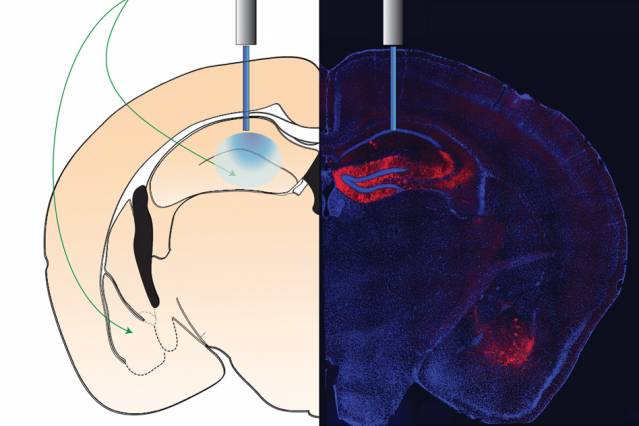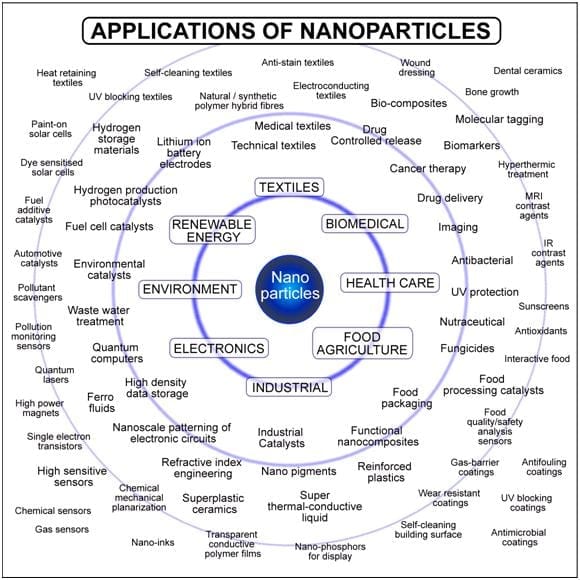
Image courtesy of the researchers
MIT study also identifies the brain circuit that links feelings to memories.
Most memories have some kind of emotion associated with them: Recalling the week you just spent at the beach probably makes you feel happy, while reflecting on being bullied provokes more negative feelings.
A new study from MIT neuroscientists reveals the brain circuit that controls how memories become linked with positive or negative emotions. Furthermore, the researchers found that they could reverse the emotional association of specific memories by manipulating brain cells with optogenetics — a technique that uses light to control neuron activity.
The findings, described in the Aug. 27 issue of Nature, demonstrated that a neuronal circuit connecting the hippocampus and the amygdala plays a critical role in associating emotion with memory. This circuit could offer a target for new drugs to help treat conditions such as post-traumatic stress disorder, the researchers say.
“In the future, one may be able to develop methods that help people to remember positive memories more strongly than negative ones,” says Susumu Tonegawa, the Picower Professor of Biology and Neuroscience, director of the RIKEN-MIT Center for Neural Circuit Genetics at MIT’s Picower Institute for Learning and Memory, and senior author of the paper.
Shifting memories
Memories are made of many elements, which are stored in different parts of the brain. A memory’s context, including information about the location where the event took place, is stored in cells of the hippocampus, while emotions linked to that memory are found in the amygdala.
Previous research has shown that many aspects of memory, including emotional associations, are malleable. Psychotherapists have taken advantage of this to help patients suffering from depression and post-traumatic stress disorder, but the neural circuitry underlying such malleability is not known.
The Latest on: Optogenetics
[google_news title=”” keyword=”Optogenetics” num_posts=”10″ blurb_length=”0″ show_thumb=”left”]
via Google News
The Latest on: Optogenetics
- Scientists engineer 'mini colons' - sparking revolution in colorectal cancer researchon April 26, 2024 at 11:00 am
Groundbreaking 'mini colons' developed by scientists from Roche Institute of Human Biology and EPFL University have sparked a revolution in colorectal cancer research. Induced to develop tumors using ...
- Illusion demystifies the way vision works: Experiments imply brightness perception occurs deeper in brain than thoughton April 26, 2024 at 8:13 am
For the first time, research shows that a certain kind of visual illusion, neon color spreading, works on mice. The study is also the first to combine the use of two investigative techniques called ...
- Illusion helps demystify the way vision works - Experiments imply brightness perception occurs deeper in the brain than thoughton April 25, 2024 at 11:52 pm
For the first time, research shows that a certain kind of visual illusion, neon color spreading, works on mice. The study is also the first to ...
- Lab-made miniorgans take scientists a step closer to curing canceron April 25, 2024 at 8:34 am
In the fight to cure cancer, scientists need better models. And they might just get them — human-derived organoids — thanks to light.
- Mapping the Neural Circuit of Social Avoidanceon April 25, 2024 at 7:51 am
Moving forward, Lin plans to continue studying this circuit to uncover other neuronal populations and brain regions that may contribute to social avoidance learning. She also wants to examine this ...
- Lab-Grown Mini-Colons Accurately Mimic Colorectal Tumor Developmenton April 24, 2024 at 5:00 pm
The researchers were able to turn inducible oncogenic genes on using “optogenetics”. This cutting-edge technique uses light to control biological processes such as gene expression. By integrating a ...
- Mini-colons advance colorectal cancer researchon April 24, 2024 at 8:00 am
In a breakthrough for cancer research, scientists at EPFL have created lab-grown mini-colons that can accurately mimic the development of colorectal tumors, offering a powerful new tool for studying ...
- Wednesday briefing: Ukraine aid; TikTok ban; David Pecker at Trump’s trial; Supreme Court abortion case; campus protests; and moreon April 24, 2024 at 5:36 am
The Supreme Court will hear arguments today about emergency room abortions. College protests over the Israel-Gaza war are continuing to spread.
- MIT Technology Reviewon April 23, 2024 at 2:00 pm
Polina Anikeeva, PhD ’09, followed up her ultrathin brain probes with tools to study the gut-brain connection—and now leads an MIT research center investigating neural pathways throughout the body.
- Restoring sight is possible now with optogeneticson April 23, 2024 at 3:30 am
Several companies are experimenting with optogenetics to create a “bionic eye” that can restore sight in visually impaired people.
via Bing News










